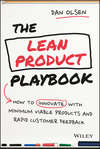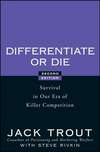Kitabı oku: «What You Do Is Who You Are», sayfa 2
WHAT MAKES A CULTURE WORK?
Culture clearly has a powerful effect. So how do you shape it, how do you set it deep in people’s minds, and how do you fix it when it goes wrong?
These questions led me to larger questions and a wider frame of reference. How does culture work in a variety of different contexts? What makes it last for more than a few years?
I have long been interested in history, and particularly in how people behaved differently from what I would have expected, given the circumstances they were born into. For instance, I would never have expected that a man who was born into slavery and who would one day free the slaves of Haiti would own slaves himself along the way—but he did. Understanding how historical cultures shaped people’s views led me to begin considering what they had to do to change themselves and their culture. Grasping that seemed to be the key to creating the kind of culture that I wanted.
I selected four models in particular, one of whom is still very much alive. I wasn’t looking for ideal cultural end states—some of the models produced extremely violent or otherwise problematic cultures—but for people who were outstandingly effective in getting the cultures they wanted. Each of these models made me ask giant questions:
Why has there been only one successful slave revolt in human history? And how did Haiti’s Toussaint Louverture reprogram slave culture to orchestrate it?
How did bushido, the code of the samurai, enable the warrior class to rule Japan for seven hundred years and shape modern Japanese culture? What set of cultural virtues empowered them? The samurai called their principles “virtues” rather than “values”; virtues are what you do, while values are merely what you believe. As we’ll see, doing is what matters. (In what follows I will use “virtues” to refer to the ideal, and “values” to refer to what most companies now espouse.) How exactly did the samurai focus their culture on actions?
How did Genghis Khan build the world’s largest empire? He was a total outsider, imprisoned as a youngster by his own tiny nomadic tribe. It’s easy to see how that made him want to smash existing hierarchies. But how, exactly, was he able to create an innovative and inclusive meritocracy? One that enabled him to constantly grow and improve while his foes were standing still?
How did Shaka Senghor, sentenced to nineteen years in a Michigan prison for murder, make his prison gang the tightest, most ferocious group in the yard—and then transform it into something else entirely? How did culture turn him into a killer? How did he rise to dominate that culture? How did he take a group of outcasts and turn them into a cohesive team? Finally, how did he recognize what he disliked about his regime, and, by changing himself, change the entire prison culture?
Companies—just like gangs, armies, and nations—are large organizations that rise or fall because of the daily microbehaviors of the human beings that compose them. But figuring out whether the root cause of a company’s success is its culture or some other factor isn’t easy. Most business books don’t look at culture from a wider, more sociological perspective. And most attempt to dissect successful companies’ cultures after the companies have succeeded. This approach confuses cause and effect. There are plenty of massively successful companies with weak, inconsistent, or even toxic cultures; a desirable product can overcome a miserable environment, at least for a while. If you don’t believe me, read up on Enron.
To avoid survivorship bias—the logical error of concentrating on companies that succeeded and falsely concluding that it was their culture that made them great—I try not to reverse engineer. Instead I look at the cultural techniques that leaders used as they tried to strengthen their culture in specific ways, and show how those efforts played out. So you won’t find any absolute “best cultures” in this book, just techniques to make your own culture do what you want it to.
HOW TO READ THIS BOOK
I start by examining the four historical models described earlier, and then break out modern-day examples of those same cultural techniques. As you read these first seven chapters, think about how leaders like Toussaint Louverture and Genghis Khan saw culture, and the tools they devised to shift it even under extremely difficult circumstances, when everything seemed to be conspiring against them. Take note of practices you might want to emulate, and how perspectives well outside your own might be surprisingly pertinent. How did the samurai design a culture whose elements all fit neatly together? How is Shaka Senghor’s experience, coming into prison as a young man and having to figure out how it worked, relevant to new employees at your company?
Creating a culture is more complex than just trying to get your people to behave the way you want them to when no one is looking. Remember that your employees are far from uniform. They come from different countries, races, genders, backgrounds, even eras. Each one brings to your organization a different cultural point of departure. To get all of them to conform to and be reasonably happy with a common set of norms is a challenging puzzle.
To get them to be who you want, you will first need to see them for who they are. I wish I could give you a simple set of steps to do that, but there is no formula. Instead we’ll consider all these questions from a variety of perspectives. To that end, these chapters also feature modern-day case studies, usually worked up from my conversations with leaders who tried to change their companies. For instance, I examine how Toussaint Louverture’s cultural techniques were applied—or should have been applied—by Reed Hastings at Netflix, Travis Kalanick at Uber, and Hillary Clinton, and how Genghis Khan’s vision of cultural inclusiveness has parallels in the work of Don Thompson, the first African-American CEO of McDonald’s, and of Maggie Wilderotter, the CEO who led Frontier Communications.
I begin the second part of the book by walking you through how to understand your own personality and your company’s strategy and how to use that understanding to build the culture you need to succeed. Culture only works if the leader visibly participates in and vocally champions it. But most people don’t walk around with a supersharp definition of their personal cultural values. So how do you identify who you are and what parts of you belong in the organization (and don’t belong)? How do you become the kind of leader that you yourself want to follow?
Then I look at edge cases that can place your culture in conflict with itself or with your business priorities. And finally, I discuss a few components that probably belong in every culture, and give you a checklist of crucial principles.
Culture isn’t a magical set of rules that makes everyone behave the way you’d like. It’s a system of behaviors that you hope most people will follow, most of the time. Critics love to attack companies for having a “broken culture” or being “morally corrupt,” but it’s actually a minor miracle if a culture isn’t dysfunctional. No large organization ever gets anywhere near 100 percent compliance on every value, but some do much better than others. Our aim here is to be better, not perfect.
As a final word of discouragement: a great culture does not get you a great company. If your product isn’t superior or the market doesn’t want it, your company will fail no matter how good its culture is. Culture is to a company as nutrition and training are to an aspiring professional athlete. If the athlete is talented enough, he’ll succeed despite relatively poor nutrition and a below-average training regimen. If he lacks talent, perfect nutrition and relentless training will not qualify him for the Olympics. But great nutrition and training make every athlete better.
If a great culture won’t ensure success, why bother? In the end, the people who work for you won’t remember the press releases or the awards. They’ll lose track of the quarterly ups and downs. They may even grow hazy about the products. But they will never forget how it felt to work there, or the kind of people they became as a result. The company’s character and ethos will be the one thing they carry with them. It will be the glue that holds them together when things go wrong. It will be their guide to the tiny, daily decisions they make that add up to a sense of genuine purpose.
This book is not a comprehensive set of techniques for creating a perfect culture. There is no one ideal. A culture’s strengths may also be its weaknesses. And sometimes you have to break a core principle of your culture to survive. Culture is crucial, but if the company fails because you insist on cultural purity, you’re doing it wrong.
Instead, the book will take you on a journey through culture, from ancient to modern. Along the way, you will learn how to answer a question fundamental to any organization: who are we? A simple-seeming question that’s not simple at all. Because who you are is how people talk about you when you’re not around. How do you treat your customers? Are you there for people in a pinch? Can you be trusted?
Who you are is not the values you list on the wall. It’s not what you say at an all-hands. It’s not your marketing campaign. It’s not even what you believe.
It’s what you do. What you do is who you are. This book aims to help you do the things you need to do so you can be who you want to be.
1
CULTURE AND REVOLUTION: THE STORY OF TOUSSAINT LOUVERTURE
Blood of a slave, heart of a king.
—Nas
After I sold my company Opsware to Hewlett-Packard in 2007 and helped with the transition, I had nothing to do. As an entrepreneur, I had trained myself to think in contrarian ways. The secret to finding a breakthrough idea, as Peter Thiel says, is that you have to believe something that nobody else does. So I started thinking about ideas that everyone believes. The first that came to mind was “Slavery was so incredibly horrible that it’s almost unimaginable that it existed at such scale.” What was the contrarian point of view?
What if it were more shocking that slavery ever ended? As absurd as that sounded, once I dug into the matter, I felt like I might be onto something. Slavery had been around since the beginning of recorded history. It was endorsed by all the major religions; long and detailed sections of the Bible and the Koran are dedicated to it. In the 1600s, more than half of the world’s population was enslaved. How did it ever end? The stamping out of slavery is one of humanity’s great stories. And the best story within that story is the Haitian Revolution.
In our long history, there has been only one successful slave revolution that led to an independent state. There were surely uprisings by the slaves of the Han Dynasty and the Christian slaves of the Ottoman Empire, and there are numerous accounts of rebellions by some of the ten million Africans held in bondage during the slave trade that thrived from the fifteenth to the nineteenth centuries. But only one revolt succeeded. Certainly, strong motivation fueled every attempt—there is no more inspiring cause than freedom. So why only one victory?
Slavery chokes the development of culture by dehumanizing its subjects, and broken cultures don’t win wars. As a slave, none of your work accrues to you. You have no reason to care about doing things thoughtfully and systematically when you and your family members can be sold or killed at any moment. To keep you from learning about other ways of life, communicating with other slaves, or knowing what your masters are up to, you are forbidden to learn to read and have no ready tools for accumulating and storing knowledge. You can be raped, whipped, or dismembered at your captor’s pleasure. This constellation of atrocities leads to a culture with low levels of education and trust and a short-term focus on survival—none of which help in building a cohesive fighting force.
So how did one man, born a slave, reprogram slave culture? How did Toussaint Louverture build an army of slaves in Saint-Domingue (the prerevolutionary name of Haiti) into a fighting force so fearsome it defeated Spain, Britain, and France—the greatest military forces in Europe? How did this slave army inflict more casualties on Napoleon than he would suffer at Waterloo?
You might suspect that slavery was less brutal in Saint-Domingue than elsewhere. Did Louverture have a particularly easy go of it?
Nope. During the slave-trade era, fewer than 500,000 slaves were brought to the United States, while about 900,000 were introduced to Saint-Domingue. Yet by 1789, the United States contained nearly 700,000 slaves and Saint-Domingue just 465,000. In other words, the death rate on Saint-Domingue overwhelmed the birth rate. The island was a slaughterhouse.
Slaves in Saint-Domingue were treated with almost incomprehensible brutality. C. L. R. James describes it in his masterpiece, The Black Jacobins:
Whipping was interrupted in order to pass a piece of hot wood on the buttocks of the victim; salt, pepper, citron, cinders, aloes, and hot ashes were poured on the bleeding wounds. Mutilations were common, limbs, ears and sometimes the private parts, to deprive them of the pleasures which they could indulge in without expense. Their masters poured burning wax on their arms and hands and shoulders, emptied the boiling cane sugar over their heads, burned them alive, roasted them on slow fires, filled them with gunpowder and blew them up with a match; buried them up to the neck and smeared their heads with sugar that the flies might devour them.
This torturous environment led to a predictably abject and suspicious culture. Black slaves and mulattoes hated each other. The man of color who was nearly white despised the man of color who was half white, who in turn despised the man of color who was a quarter white, and so on.
What’s more, the military power poised to crush any rebellion was enormous. Saint-Domingue provided a third of the world’s sugar and half of its coffee; it was the most profitable colony in the world, and therefore of massive strategic interest. Every empire wanted to control it.
So no, this environment was not ideal for rebellion.
Louverture’s rebellion was no mere slave revolt, but a much more complex disruption premised on meticulous military strategy and aimed at lasting change. Considered a genius even by his enemies, Louverture was able to blend the best, most useful elements from slave culture and from the colonial European culture that had enslaved him—and to mix in his own brilliant cultural insights. The resulting hybrid culture inspired a ferocious army, a cunning diplomacy, and a farsighted perspective on economics and governance.
WHO WAS TOUSSAINT LOUVERTURE?
Louverture was born into slavery on the Bréda estate sugar plantation in Saint-Domingue in, we think, 1743. Much of his personal history is fragmentary and uncertain—no one bothered to keep detailed records about obscure slaves. Historians also disagree about many of the turning points in the country’s revolution, agreeing only that its leader was an extraordinary man.
As a child, Louverture was so frail his parents called him “Sickly Stick” and did not expect him to live. Yet by age twelve, he had surpassed all the boys on the plantation with his athletic feats. In time he became known as the colony’s greatest horseman. Even as he neared sixty, he often rode 125 miles in a day.
Louverture was just five feet two and by no means handsome. Laconic, with a stern, probing glance, he was immensely energetic and focused. He slept two hours a night and could live for days on a few bananas and a glass of water. His education, position, and character gave him tremendous prestige among his fellow slaves long before the revolution. He never doubted that his destiny was to be their leader.
While still a teenager, he was made caretaker of the estate’s mules and oxen—a post usually held by a white man. Louverture seized this rare opportunity to educate himself in his free time and to read through his master’s library, including Julius Caesar’s Commentaries and Abbé Raynal’s Histoire des deux Indes, or History of two Indies, an encyclopedic account of trade between Europe and the Far East. Caesar’s work helped him understand politics and the art of war, and Raynal’s gave him a thorough grounding in the economics of the region and of Europe.
But his education and position did not exempt him from the fundamental indignity of being black. One day, as he was returning from Mass carrying his prayer book, a white man took notice. Louverture would recall that the man “broke my head with a wooden stick while telling me ‘do you not know that a negro should not read?’” Louverture apologized and stumbled home. He kept the vest soaked with his blood as a reminder of the incident. Years later, after the rebellion began, he met his tormenter again and, his biographer Philippe Girard writes with satisfaction, “killed him on the spot.”
The estate’s attorney, François Bayon de Libertat, recognized Louverture’s abilities and made him coachman. Around 1776, he freed Louverture; Louverture was now paid to drive Libertat’s coach. At the time, fewer than one in a thousand black men were set free. The father of the Haitian Revolution earned his freedom by forming a special bond with a white man.
Louverture used every carriage ride with Libertat to expand his network, making contact with nearly all of his future allies. The rides also enabled him first to understand, and then to master, French colonial ways. Louverture gradually came to a realization that no one else in colonial Saint-Domingue had arrived at: culture, not color, determined behavior.
One astonishing demonstration of this truth was that after he’d been freed, Louverture purchased slaves, usually to free them in turn. But he also strove to get ahead in the colonial manner, the only manner available to him at that point: off of slave labor. In 1779, in a brief and unsuccessful attempt to make money, he leased a coffee plantation worked by thirteen slaves. One of them was Jean-Jacques Dessalines, who in later years would become his second in command—and then go on to betray him.
If there was a motivational trigger for Louverture to turn from commerce to statecraft, perhaps it came in 1784, when he read a famous passage written by Abbé Raynal, a proponent of liberty who hoped for a slave revolt: “A courageous chief only is wanted. Where is he, that great man whom Nature owes to her vexed, oppressed, and tormented children? Where is he?” According to one account, Louverture read this passage over and over, dreaming that he might be that courageous chief.
LOUVERTURE’S RISE
Once news of the French Revolution of 1789 reached the island, insurrection was in the air. The initial rebellion on the Manquets plantation in 1791 stirred up slaves on the surrounding plantations, and within a few years the insurrectionary force grew to fifty thousand men, one hundred times the size of the largest slave revolt in U.S. history.
Louverture had known of and perhaps helped shape plans for the uprising, but he waited to see how it would go, only joining in a month after it began. The colony’s political situation was extremely complicated, with numerous factions, parties, and shifting alliances, and it was unclear what would happen on your plantation next week, let alone to the whole island over time.
When Louverture joined the rebels he was about forty-seven and already known as “Old Toussaint.” Within a few months he had appointed himself brigadier general and was leading one of the three chief rebel groups. To build support, Louverture implied that he was acting on behalf of the French king, Louis XVI, who, he said, had issued him a document promising the rebels three days of rest a week in exchange for their efforts. He was able to pull off this ruse because almost none of his followers could read and write.
Between 1791 and 1793, he and the rebels made such progress that France dispatched eleven thousand troops to hold them back—more than the nation sent abroad during the U.S. War of Independence.
After Louis XVI was guillotined in Paris in 1793, the British and Spanish invaded Saint-Domingue, each hoping to seize the prize while France was preoccupied. Once Spain declared war on France, Louverture went to the Spanish commander and offered to integrate his six hundred men into the Spanish army, which other rebellious slave groups were also joining. And so Louverture became a colonel in the Spanish army, fighting the French.
The following year, seeing an advantage for himself and his troops, Louverture defected to the French army. Within a year, he and his men, now five thousand strong, had retaken almost all of the French towns he had just conquered for Spain, and subdued several rebel groups still allied with the Spanish. These victories, in concert with military setbacks in Europe, forced Spain to sue for peace. Louverture had defeated his first European superpower.
Next he faced the British, who had sent two large battalions to Saint-Domingue. Unprepared to tackle a large professional army, Louverture began retreating in 1795 and maintained a defensive posture for two years, even as the remaining blacks on the island, some 500,000 men in all, joined his side. Time, guerrilla skirmishing, and yellow fever wore down Louverture’s foes. Twelve thousand of the twenty thousand British soldiers who arrived on the island were buried there, and in 1798 Louverture negotiated the departure of their remaining forces. He had defeated his second European superpower.
In 1801 he invaded Santo Domingo, the Spanish part of the island that is now the Dominican Republic, and defeated the Spanish for good. On July 7, 1801, he became governor of the entire island where he had once been a slave. He promptly published a new constitution. Saint-Domingue would still be a French colony, in name, but the constitution abolished slavery, opened all jobs to all races, and made the territory functionally independent. In just ten years Louverture and his army had accomplished the unimaginable.











